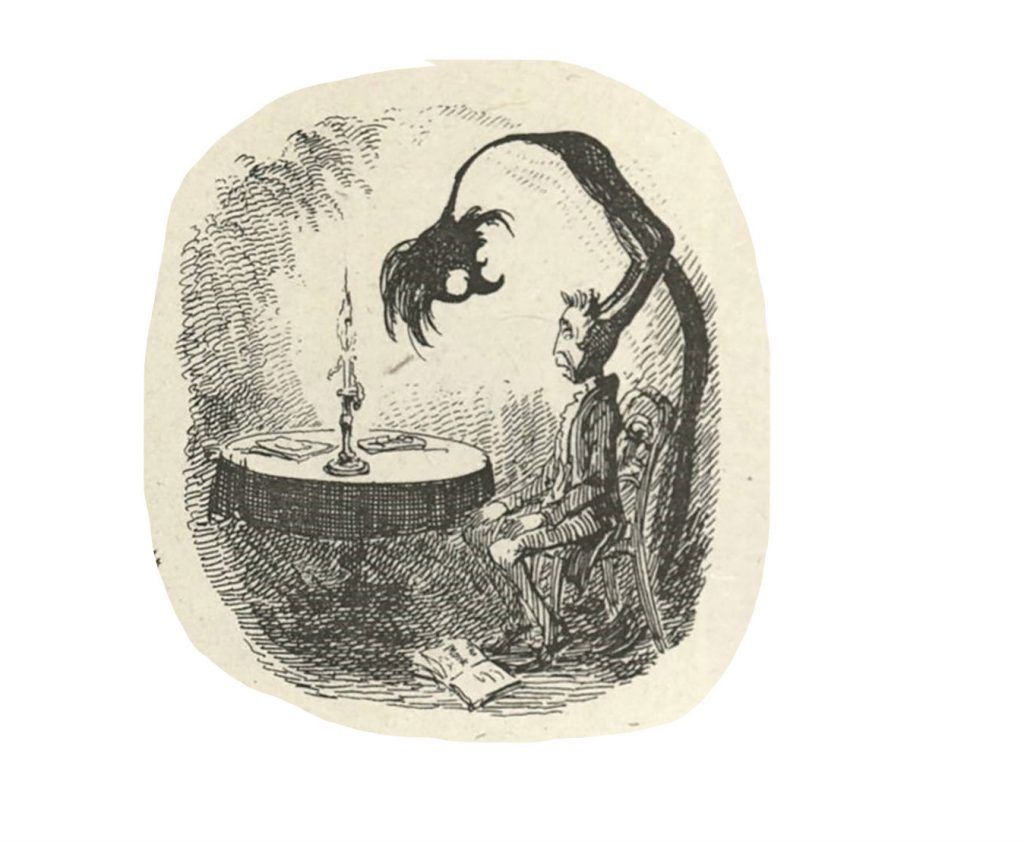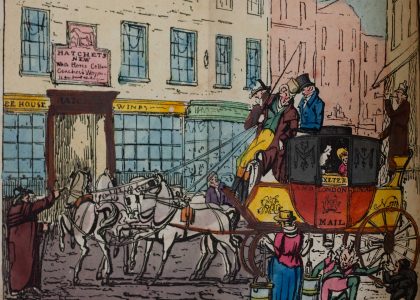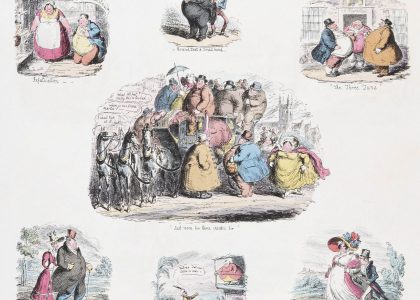In his over sixty-year career, Cruikshank became an expert at capturing the excesses, absurdities, inequities, and depravity of British society. “I can see clearly what is ridiculous in others,” he once observed (See Life of George Cruikshank ). His work both shaped and was shaped by the diversity and prejudices of nineteenth-century Britain. Cruikshank’s distinct and, at times harmful, portrayal of people from various economic, racial, and religious backgrounds provide a window into the period’s politics. Ranging from some of his earliest satirical pamphlet engravings to his mid-career book plates and later career compilations, this section spotlights Cruikshank’s array of human bodies.

“Of all the artists that ever drew, from Michael Angelo upwards and downwards, Cruikshank was the man to illustrate these tales, and give them just the proper admixture of the grotesque, the wonderful, and the graceful.”
William Makepeace Thackeray, “On the Genius of George Cruikshank.”
Sketching people was a cornerstone of Cruikshank’s work across print genres, but realism was neither his goal nor his forté. In this section, you will see the relationship between bodies and cultural attitudes primarily in the form of caricature. As L. Perry Curtis Jr. explains in his study of bias in Victorian caricature, “Physiognomy is as inseparable from caricature as the stereotype is indispensable to any form of prejudice.” The sketch artist makes choices as to which body part they will exaggerate, distort, warp, or contort based upon what they understand of their subject’s mannerisms and beliefs and their audience’s visual literacy.
As you browse the items in these collections, you might ask: Why does the artist choose to make a nose larger? Why did they make a pair of legs short? Why do they make one woman thin and another round? What do their expressions say about their situation, status, or personality?

This section features two thematic clusters, each with embedded collections. In “Life and London,” you will find “Class Stratification” and “Out and About,” featuring Cruikshank’s rendering of Britain’s hardening class divisions and how they manifested in the sights and sounds of everyday London. “Bodily Forms & Features,” features the collections “Comic & Grotesque” and “Racial & Ethnic Stereotypes,” locating both the ridiculous and the malicious in Cruikshank’s engravings of embodied diversity.
Click on the images below to explore each collection




 Albin O. Kuhn Library & Gallery
Albin O. Kuhn Library & Gallery